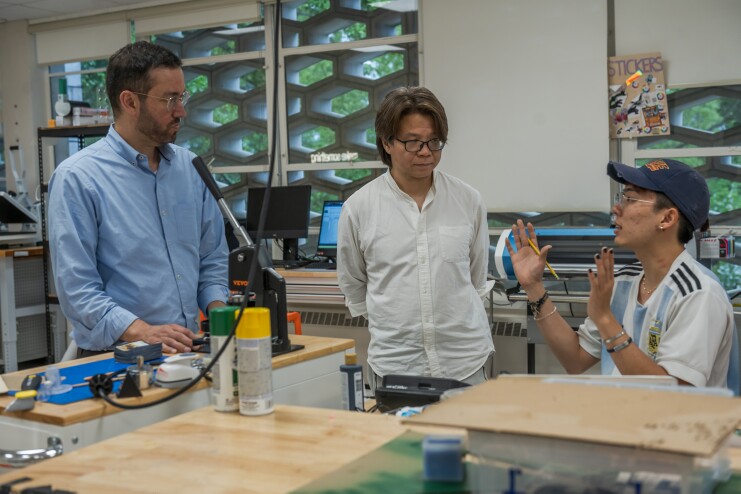
As part of Methodist University’s upcoming Research and Creativity Symposium, the university will host a deeply philosophical and visually striking art exhibition titled “Great Truths without Division,” created by visiting Chinese artist Xianhuang Liu (Eric) and curated by Andrew Prieto, associate professor of Art at Methodist. The exhibition, held in the University’s Union-Zukowski Lobby & Gallery, will open Thursday and feature a panel discussion, a hands-on workshop that includes Chinese scroll scribing, a meet-and-greet with the artist and curator, and a public reception in the evening.
As part of Methodist University’s upcoming Research and Creativity Symposium, the university will host a deeply philosophical and visually striking art exhibition titled “Great Truths without Division,” created by visiting Chinese artist Xianhuang Liu (Eric) and curated by Andrew Prieto, associate professor of Art at Methodist. The exhibition, held in the University’s Union-Zukowski Lobby & Gallery, will open Thursday and feature a panel discussion, a hands-on workshop that includes Chinese scroll scribing, a meet-and-greet with the artist and curator, and a public reception in the evening.
The exhibit’s title, “Great Truths without Division,” suggests a paradox that invites reflection: Humanity shares one Earth, one future, yet we often live in divided realities.
Liu’s exhibit explores the theme of unity within division—highlighting the paradox that, while humans often live in separate realities, they ultimately share one world and one future.
“The order of human beings in the world is shared,” Liu explained. “We share the same fate, the same future. It’s important to think about cooperation, negotiation, and the opportunity to change—because something small to one person might be meaningful to someone else.”
Drawing inspiration from Taoist philosophy and traditional Chinese gardening, Liu creates layered visual narratives that challenge his audiences to reflect on how they shape and are shaped by their environments.
“In Chinese gardening, creating a hill also means creating a pond. They shape each other,” Liu said. “It’s not about conquering the world but finding shared opportunity within it.”
Prieto said the exhibition holds unique relevance to Methodist University’s identity as a faith-based institution.
“The garden is a central theme in both Taoist and Christian traditions,” Prieto said. “This exhibition offers a rare intersection of those ideas. It’s boundary-pushing, reflective, and asks us to see the world through a different lens.”
As part of Thursday’s workshop, Liu will invite attendees to contribute to what he jokingly describes “possibly the longest scroll in the world,” in collaborative scroll painting—a hands-on activity open to students, faculty, and visitors that Liu hopes will emphasize the joy of collective creation and artistic freedom.
“It’s free and open to everyone,” Liu said. “It’s endless, and everyone can leave their mark.”
Prieto noted that Methodist University students have already played a key role in preparing the exhibition and will continue to assist with an upcoming extension of the project in Beijing, where he plans to travel in 2026 with support from student collaborators and MU faculty.
The exhibit will also travel to the University of Pennsylvania—where Liu is currently a visiting scholar—and later to Washington, D.C., as part of a larger tour.
During preparations, Liu and Prieto found inspiration in the concept of “transparency,” a term applied to the spatial layering often found in Chinese gardens. That same layering, they said, can be seen in architecture across Methodist’s campus.
“If there are no layers, you see all the way to the end,” Liu said. “It creates a kind of fatalism. But with layers, you move through life stage by stage—with curiosity, interest, and presence.”
The “Great Truths without Division” exhibit is open to the public and will remain on display through July.
For more information, see our Symposium Week events.